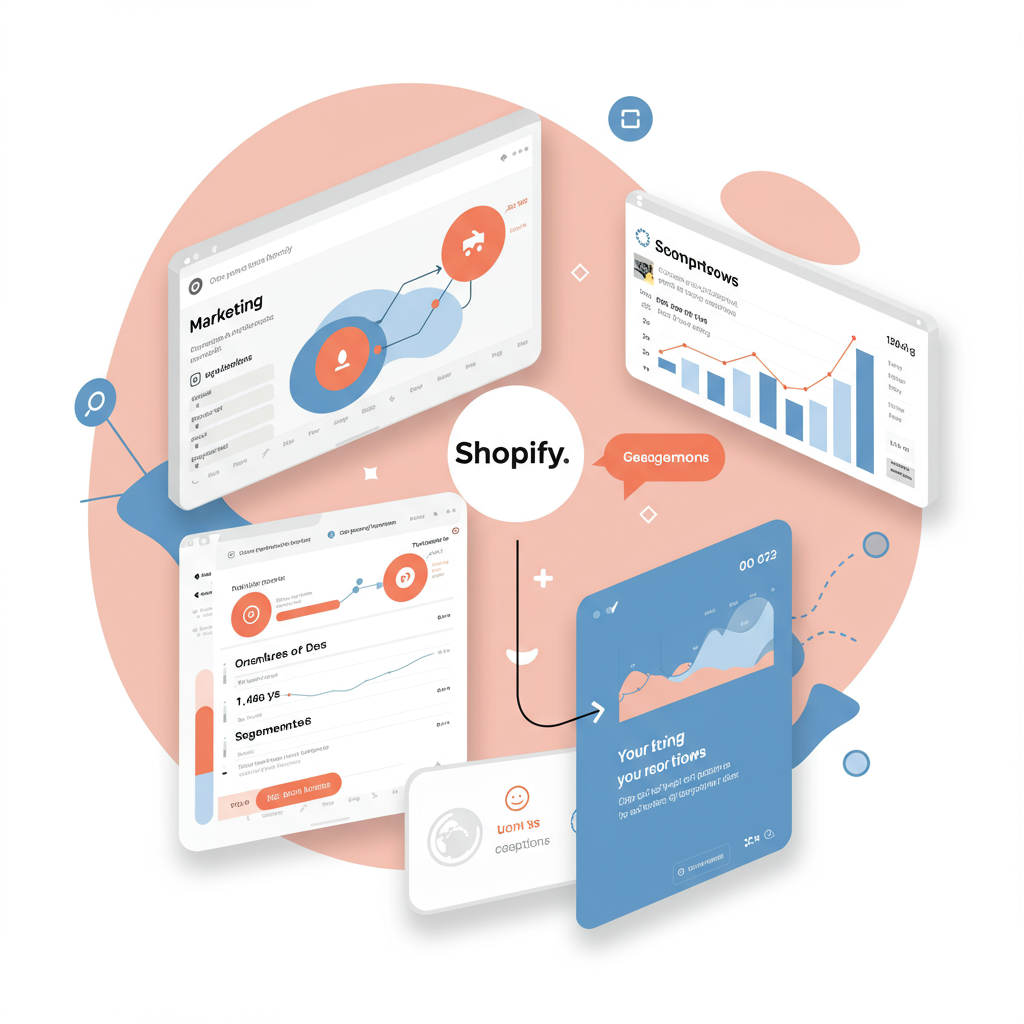Unlock unparalleled customer engagement and drive sales by seamlessly connecting your Shopify store with Klaviyo’s powerful marketing automation.
As an e-commerce merchant, I’m constantly looking for ways to optimize my store’s performance and build stronger relationships with my customers. One of the most impactful tools I’ve integrated into my tech stack is Klaviyo, especially when paired with Shopify.
For me, Shopify provides the robust foundation for my online store, handling products, orders, and customer data with ease. But to truly leverage that data for personalized marketing, I found Klaviyo to be an indispensable partner.
This article is my personal walkthrough, sharing how I’ve used Klaviyo with Shopify to transform my customer communication, automate my marketing efforts, and ultimately, boost my revenue. I believe it can do the same for you.
So, why Klaviyo specifically? While there are many email marketing platforms out there, Klaviyo stands out because it was built from the ground up for e-commerce. Its deep integration with Shopify means it understands customer behavior in a way generic platforms simply can’t.
It pulls in every piece of data imaginable: what products customers viewed, what they added to their cart, what they purchased, how much they spent, and even their browsing history on my site. This granular data is the key to hyper-personalization.
My first step was connecting the two platforms. This process is surprisingly straightforward. From my Klaviyo dashboard, I navigated to the ‘Integrations’ tab and selected ‘Shopify’.
Klaviyo then prompted me to enter my Shopify store URL and authorize the connection. Within minutes, the two systems were talking to each other, and I could see my Shopify data starting to flow into Klaviyo.
Once connected, Klaviyo automatically began syncing crucial data points. This includes customer profiles, order history, product catalog information, and even real-time events like “Added to Cart” or “Viewed Product.”
This initial data sync is foundational. It populates Klaviyo with the historical context of my customers, allowing me to segment them based on past purchases, total spend, or even how long it’s been since their last order.
With the data flowing, I then focused on Klaviyo’s core features: Segments, Flows, and Campaigns. Understanding these three pillars is essential for maximizing your e-commerce marketing.
Segments are dynamic lists of customers based on specific criteria. For example, I created a segment for “VIP Customers” (those who’ve spent over $500), “First-Time Buyers,” or “Customers who purchased Product X but not Product Y.”
Flows are automated, multi-step sequences triggered by a specific event. Think of them as your always-on marketing assistants. This is where the real magic happens for me.
Campaigns are one-time email or SMS blasts, perfect for new product launches, holiday sales, or important announcements. I use them for immediate impact, while Flows build long-term relationships.
My absolute go-to Flow, and likely yours too, is the Abandoned Cart Flow. Shopify tells Klaviyo exactly when someone adds an item to their cart but doesn’t complete the purchase.
I set up my Abandoned Cart Flow to send a reminder email after 30 minutes, a second one after 24 hours with a small incentive (like free shipping), and a final one after 48 hours. This alone has recovered a significant amount of lost revenue for me.
Another critical automation I implemented is the Welcome Series Flow. When someone signs up for my newsletter or makes their first purchase, they enter this flow.
My Welcome Series typically includes an immediate welcome email, followed by emails introducing my brand story, highlighting best-selling products, and offering a first-purchase discount. It’s about building rapport from day one.
I also leverage the Browse Abandonment Flow. If a customer views a product multiple times but doesn’t add it to their cart, Klaviyo can trigger an email reminding them of the product and perhaps suggesting related items. This is incredibly powerful for capturing interest.
For post-purchase engagement, I have a Post-Purchase Flow. This sends a thank-you email immediately after purchase, followed by a request for a product review a week later, and then perhaps a cross-sell or upsell suggestion based on their purchase.
I also maintain a Win-Back Flow for customers who haven’t purchased in a while. After 90 days of inactivity, they receive a series of emails designed to re-engage them, often with a special offer to entice them back.
The beauty of Klaviyo is its ability to use all that Shopify data for deep personalization. I can include a customer’s first name, show them products they’ve viewed, or recommend items based on their past purchases directly within my emails.
I’ve also started experimenting with Klaviyo’s SMS marketing capabilities. For urgent promotions or quick reminders, SMS can be incredibly effective, especially when integrated with the same rich customer data from Shopify.
Finally, I regularly dive into Klaviyo’s analytics. I track open rates, click-through rates, conversion rates for each flow, and overall revenue generated. This data helps me continually refine my strategies and optimize my campaigns.
My advice to any Shopify merchant is to start simple with the core flows (Abandoned Cart, Welcome Series) and then gradually build out more sophisticated automations as you get comfortable. The potential for growth is immense.
What do you think about this article? I’d love to hear your thoughts on how you’re using Klaviyo with Shopify, or if you have any questions about getting started.
In conclusion, integrating Klaviyo with Shopify has been a game-changer for my e-commerce business. It allows me to communicate with my customers in a highly personalized and automated way, fostering loyalty and driving consistent sales.
It’s an investment that pays dividends by turning raw customer data into actionable marketing strategies. I highly recommend exploring its full potential for your Shopify store.






